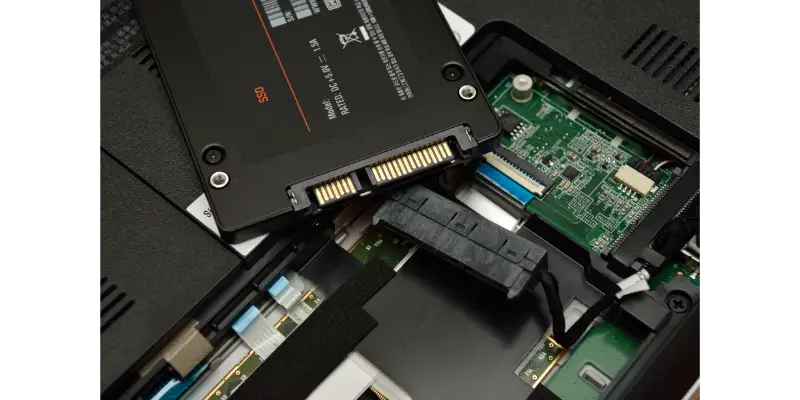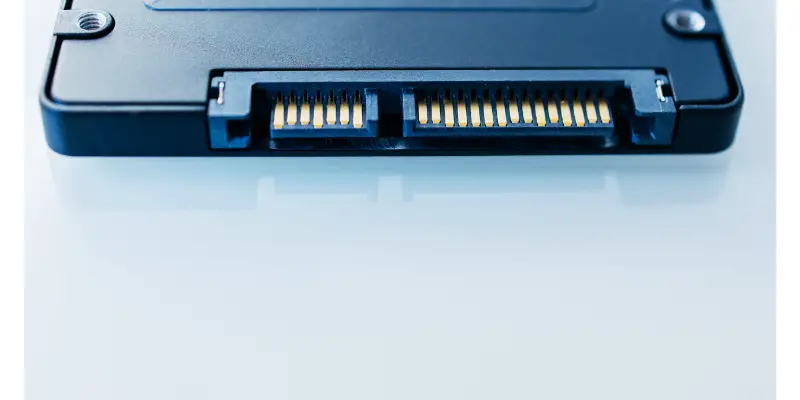Disclaimer: This post may contain affiliate links, meaning we get a small commission if you make a purchase through our links, at no cost to you. For more information, please visit our Disclaimer Page.
Solid-state drives are often marketed for their reliability, but is it possible to get bad sectors on an SSD?
SSD can get bad sectors even though they do not have mechanical parts. The sectors in SSDs can fail, and when this happens, they tend to wear out the more you use them. Ultimately, they may fail, but this may not necessarily mean that you will lose your data.
Table of Contents
Can SSD Get Bad Sectors?
Most SSDs will have lower health issues that come to be because of wearing out of the Writes. But sometimes, you find the SSD may also have bad sectors, and you can easily detect this early enough. If your SSD has bad sectors, you will notice that you cannot read the folders due to damage.
Moreover, the bad sectors affect the functionality of the SSD such that the SSD operates at a much slower speed than usual, especially when reading data in some files. Moreover, the whole internal system of the computer may be slow, and at times, it will not be able to boot the system. Such is the case where the system does not recognize the SSD.
Currently, having a bad sector in the SSD is quite normal. It is unlike the case where you are dealing with a traditional hard drive. In such a case, bad sectors in the SSD signify that the system fails or will come to fail sometime.
If you have bad sectors in your SSD, then there is no cause for alarm. The only time it should be an issue is when the number of bad sectors starts changing. When the numbers start to increase, they may make the system fail altogether.
Some SSDs come with a small number of bad blocks from the factory, but such has a sign to show that they are bad. Even though they have the bad blocks, the SSD tends to care for this internally. Usually, it will do so by ensuring that you do not use them.
The SSD will then recover the data in the bad block and store it in another “good” spare block. You have no control of the process since it will take place inside the SSD. However, you can go through the content in the SSD so that you can control the process.
While SSDs have a way of automatically marking the bad sectors, you can also locate them. To do this, you may require some disk scanning tools, and you will find them. If the disks in your server system are many, you can run a scan all around the disks, which is pretty easy to detect all the bad sectors in the discs.
If you are doing the internal self-test functions on your computer, you will notice failure in the SSDs with bad sectors. But most times, the SSDs with bad sectors will not be in use to not cause more issues. In some cases, the manufacturer will not display any issues in the bad sectors, and it is upon you to do so.
What are Bad Sectors on SSD?
Bad sectors on the SSD are parts that the computer cannot access. Accidents and software are the ones that mainly destroy such sectors, therefore, making the computer not reach them. Usually, the sectors are available in HDD and SSD, but the HDD tends to be more fragile.
Bad sectors in SSDs are known as blocks, and usually, the feature lacks the magnetized and demagnetized rotating disks for data read/write operations. However, any accident or damage in the software has potential damage to the sector. There are two types of bad sectors: one results from physical damage and the other one due to software errors.
There are two types of bad sectors which are physical and logical bad sectors. The physical one implies that there is damage in the storage sector in the SSD. Such may occur if the SSDs flash memory is worn out, and in this case, you cannot repair the SSD.
When the bad sector is logical, there is a storage part in the SSD that is not working properly. If the operating system tries to read data on the drive and cannot, it may generate an error-correcting code which means that something is wrong with the software. If the bad sector is logical, then you can easily repair it.
If the SSD starts wearing out, it may eventually result in sectors becoming bad. Such is the case where the sectors have been written many times. The SSD will then map the sectors to the extra memory, and if this memory is full, the capacity on the drive will drop, rendering the sectors unreadable.
If the SSD has bad logic sectors, it is a clear indication that there is an issue in the software. Maybe there are viruses in the computer, or maybe some malware is trying to mess with the SSD causing the bad sectors to develop.
Usually, the SSD having bad sectors should not cause panic. If it has bad sectors, it does not imply that the SSD is failing, unlike the HDD case. However, you need to ensure that you back up the disks even though it is not much of an issue.
What Do Bad Sectors Do to an SSD?
When your SSD has bad sectors or bad blocks, it tends to slow down most of its operations. Typically, the computer may do all the rebooting, posting, and most of its functions normally. But you will notice that there is an issue in how it carries on its functions.
Bad sectors make the computer take an unusually long time to carry on its functions. For example, when the computer is trying to read or save a file, it takes so long. After this long time, it may not even save or read the file, therefore, giving you an error message.
Also, bad sectors limit the functioning of the SSD. Once the computer identifies the bad sector, it will transfer the data to another “safe place” or another extra sector that is ok. Such leaves some space on the SSD unused, and of course, you cannot use it.
Upon transferring the data to another place, the extra space may fill up, and such may cause the SSD to fail altogether. The excess data will make the functionality of the SSD even slower. The SSD is also prone to data corruption.
You can control the damage that the bad sectors cause to the SSD by detecting them early. To achieve this, you need to scan the SSD constantly. As you do this, ensure that you do the monitoring using accurate and error-sensitive methods.
How to Track and Fix SSD Bad Sectors?
You can track and fix bad sectors using various techniques. With tracking, you will be able to identify both physical and logical damages. But when repairing, you can only fix the logical damage.
One of the easiest ways to track and fix bad sectors is using the disk operating system. The operating system also features a command line CHKDSK that is usually built into the computer. The command line can scan through your SSD and mark the bad sectors in it.
When using it, start by pressing the Windows key +R to appear in the run command dialog box. You should then key in CMD in the dialog box and click enter. There will be a black window command prompt to type the command line and press “enter.”
If you want to repair the errors in your SSD, type the Command line, CHKDSK/ F C or D, depending on the drive you want to check. The/ F means that you want the command to identify and repair the soft bad sectors. You can also track and fix the bad sectors using some disk error checking tool in Windows or third-party software.
Conclusion
It is normal for SSDs to have bad sectors. If they have them, then it means that there is some issue with the hard disk, and there is no need to cause an alarm for this. You can easily repair bad sectors but only the Logic ones. But to stay on the right side, ensure you constantly create a backup for your data.


